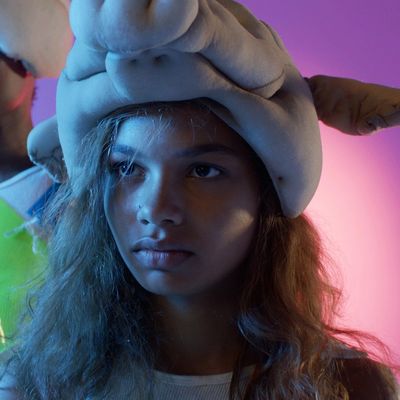
Although it’s a rich moment for independent cinema (filling gaps left by Hollywood), there’s a shortage of truly experimental work, of films with original and sometimes confounding vocabularies. Josephine Decker’s Madeline’s Madeline is thrillingly confounding. (Would that work on a poster? Maybe not.) Audaciously, or pretentiously — or both — it opens with a blurry montage in which a nurse leans into the camera and says, “What you are experiencing is just a metaphor … You are not the cat, you are inside the cat.” That clears up nothing, but then we meet Madeline (Helena Howard), a young girl playing a cat in an improvisational theater piece directed by the intense Evangeline (Molly Parker). Fiercely attentive, touchy-feely, alternately obsequious and cutting, Evangeline dotes on Madeline, trying to be the “good mother” to counter the girl’s actual, unstable one, Regina (Miranda July). But can Evangeline be trusted? The improvisations meant to liberate Madeline are starting to push her into crazy-making territory.
You might roll your eyes at all the theaterspeak in the script by Decker and Donna di Novelli, but I think the whole of Madeline’s Madeline really does function as a metaphor. It’s a coming-of-age film from “inside the cat.” Nothing is spelled out, but Madeline is obviously trying on and discarding various masks and voices and ways of being with her mother, teacher, and a boy she wants to kiss. Her roiling psyche is in every frame thanks to Ashley Connor’s camera, which never settles down. The movie is all jittery swerves and blurry half-close-ups and cuts to lips, eyes, teeth. The last 15 minutes look as if they were shot with Vaseline over the lens. (I’m not sure that effect works.) The score by the brilliant young composer Caroline Shaw is a hodgepodge of jarring percussion and sweet choral singing; it has what my colleague Justin Davidson describes as a “luminous, sensual clarity.”
“Sensual clarity” is a neat way of evoking Madeline’s Madeline, for all its strenuous dislocation (and sometimes unfortunate obfuscation). Parker is spookily controlling, July spookily babyish, while Howard, in the middle, is a winsome presence even when the images feel as if they’re pinging around in your skull.
*This article appears in the August 6, 2018, issue of New York Magazine. Subscribe Now!


